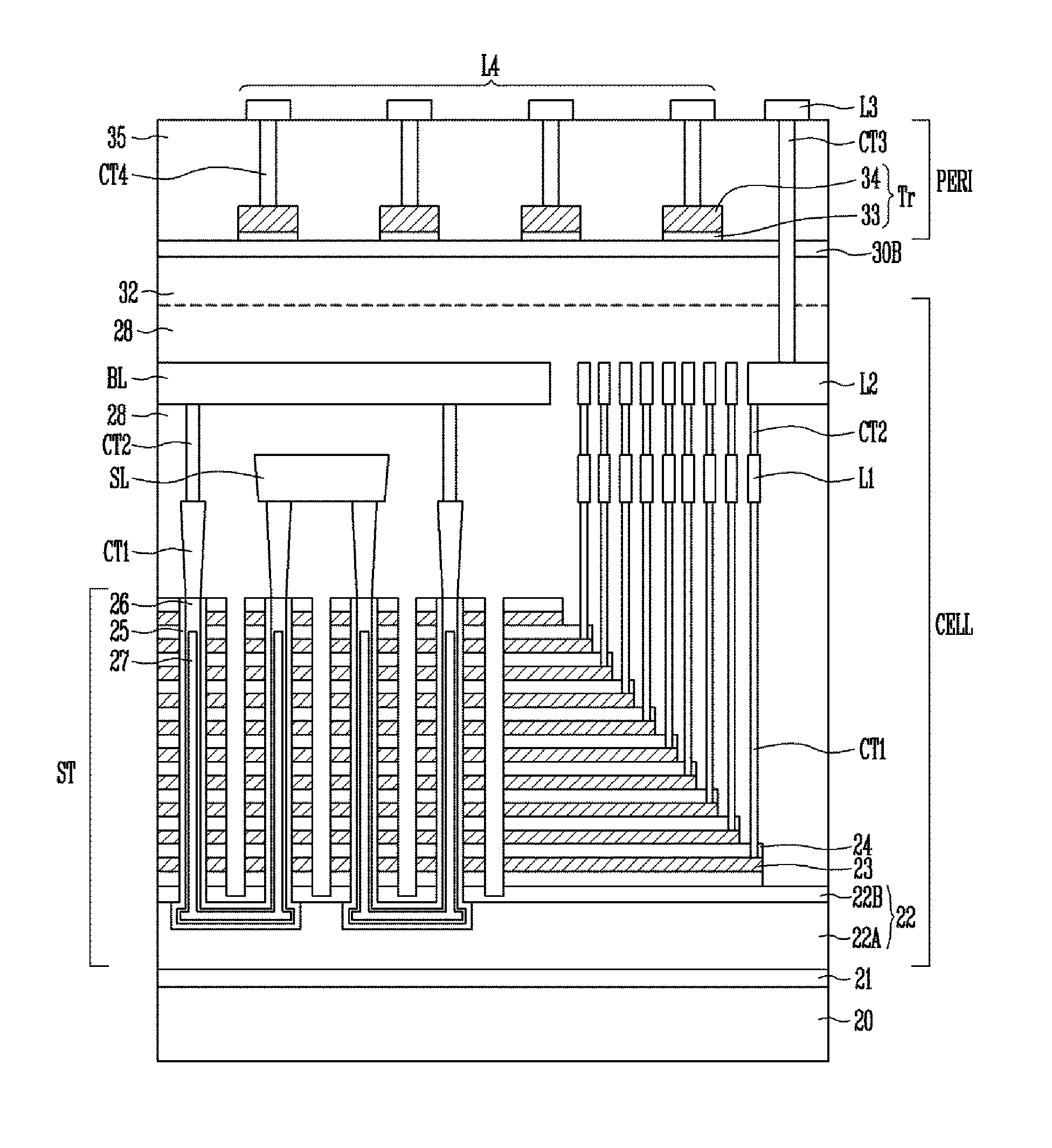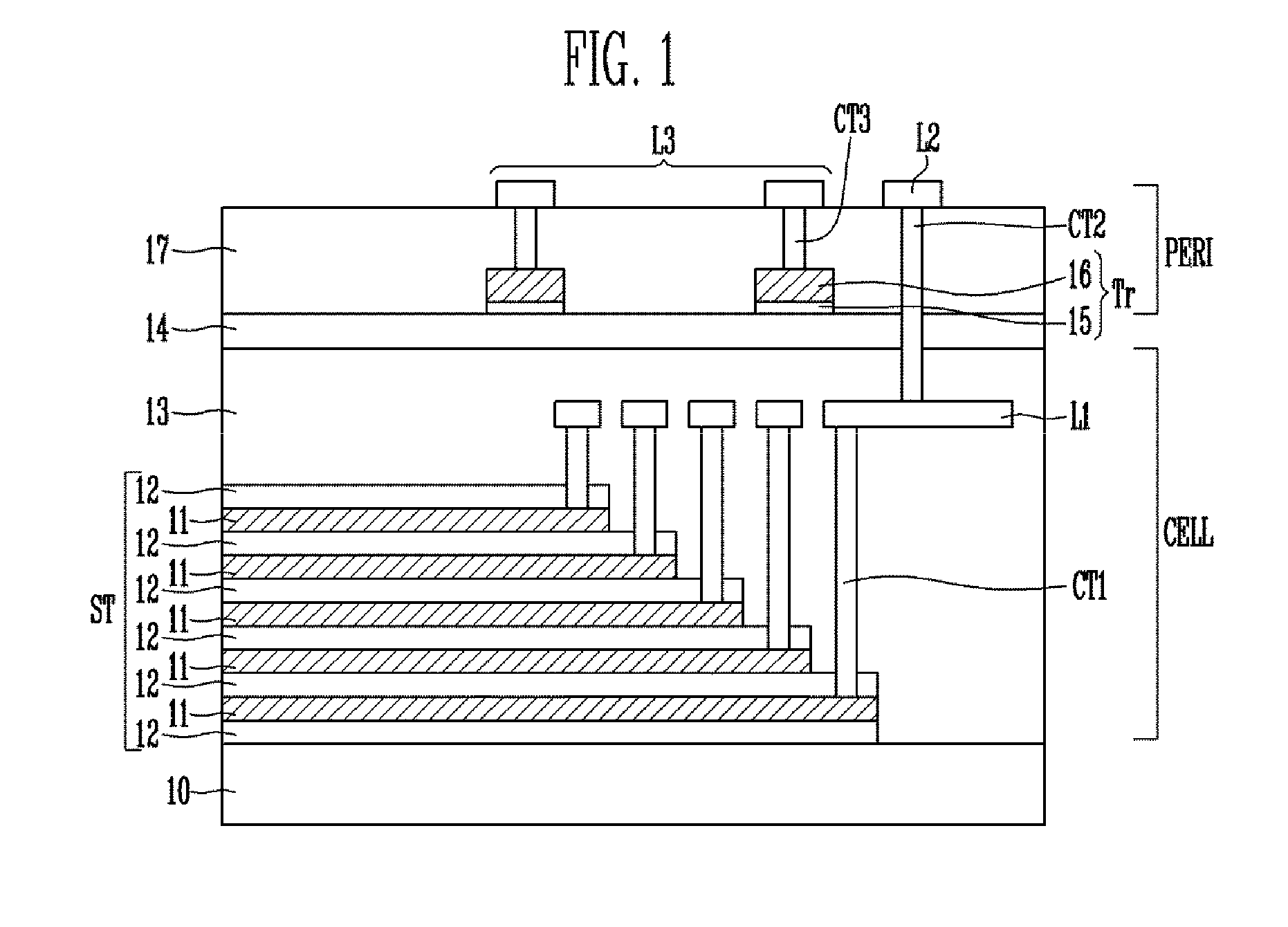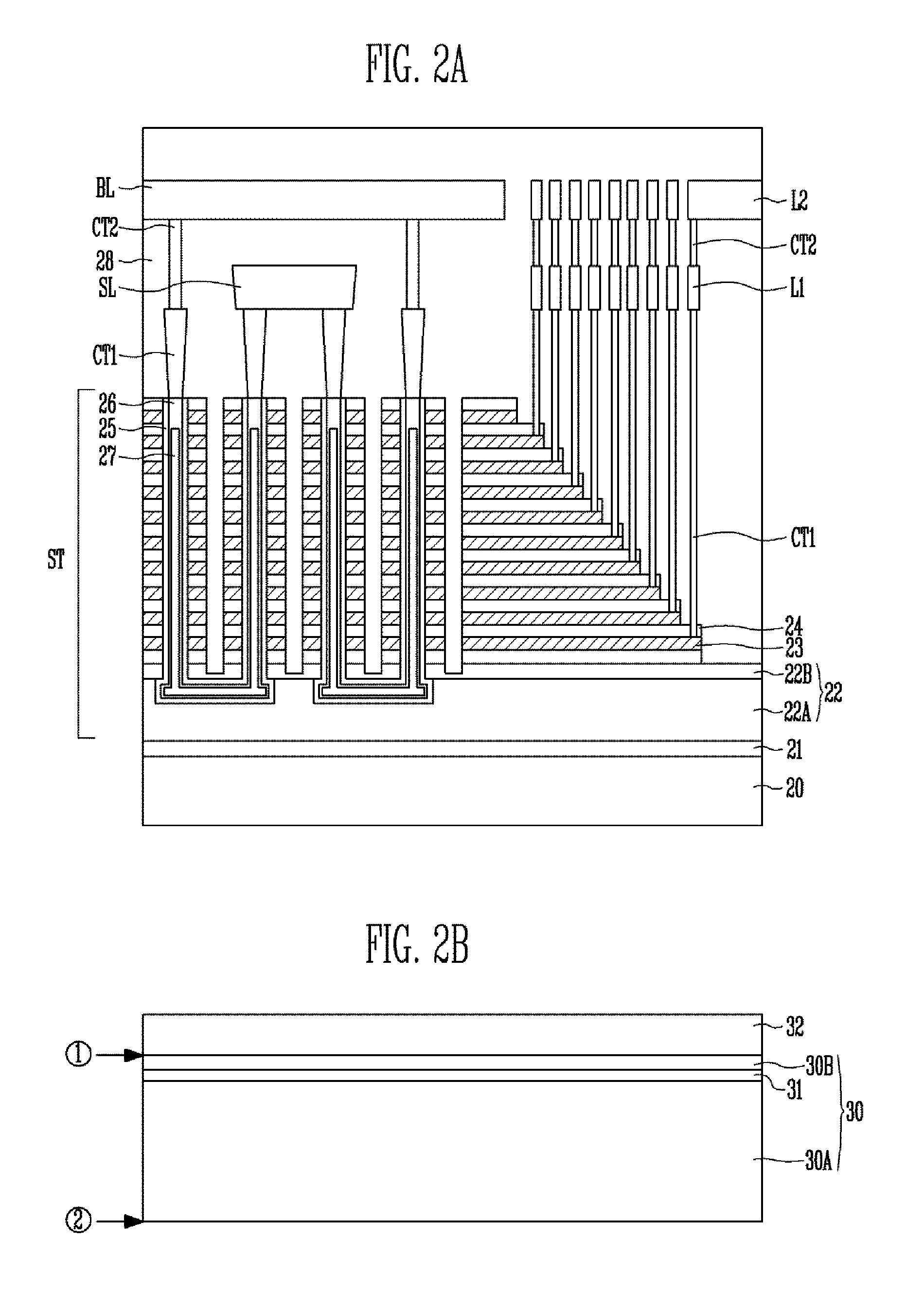Semiconductor device and method of manufacturing the same
a semiconductor and semiconductor technology, applied in semiconductor devices, instruments, electrical devices, etc., can solve the problems of limited degree of integration of 3d non-volatile memory devices, physical limits of increasing the degree of integration of substrates, and the inability to manufacture memory cells in two-dimensional memory devices, etc., to achieve the effect of increasing the degree of integration
- Summary
- Abstract
- Description
- Claims
- Application Information
AI Technical Summary
Benefits of technology
Problems solved by technology
Method used
Image
Examples
first embodiment
[0024]FIG. 1 is a cross-sectional view of a structure of a semiconductor device according the present invention.
[0025]As illustrated in FIG. 1, the semiconductor device according to the first embodiment includes a first substrate 10, a second substrate 14 located over the first substrate 10, and at least one line, e.g., a second line L2. A cell region CELL in which memory cells are stacked is defined on the first substrate 10. A peripheral region PERI is defined on the second substrate 14. The second line L2 is located in the peripheral region PERI. The second line L2 passes through the second substrate 14 and is coupled to the cell region CELL. As can be seen, the first substrate 10 and the second substrate 14 are non-contiguous and are positioned along different planes.
[0026]The cell region CELL refers to a region where the memory cells are formed. The peripheral region PERI refers to a region where transistors configured to provide access to the memory cells are formed.
[0027]In a...
second embodiment
[0053]As illustrated in FIG. 3, the semiconductor device includes a first substrate 40, a second substrate 47 and at least one line, e.g., a second line L2. The first substrate 40 includes a cell region CELL formed along a first surface ① and a peripheral region PERI formed along a second surface ② thereof. The second substrate 47 is formed under the cell region CELL, and the second line L2 is formed in the peripheral region PERI. The second line L2 extends through the first substrate 40 and is coupled to the cell region CELL. The first surface ① may be a rear surface of the first substrate 40, and the second surface ② may be a top surface of the first substrate 40.
[0054]In addition, the semiconductor device may further include a stacked structure ST, a first interlayer insulating layer 43, a second interlayer insulating layer 44 and one or more transistors Tr. The stacked structure ST includes one or more first material layers 41 and one or more second material layers that are for...
PUM
 Login to View More
Login to View More Abstract
Description
Claims
Application Information
 Login to View More
Login to View More - R&D
- Intellectual Property
- Life Sciences
- Materials
- Tech Scout
- Unparalleled Data Quality
- Higher Quality Content
- 60% Fewer Hallucinations
Browse by: Latest US Patents, China's latest patents, Technical Efficacy Thesaurus, Application Domain, Technology Topic, Popular Technical Reports.
© 2025 PatSnap. All rights reserved.Legal|Privacy policy|Modern Slavery Act Transparency Statement|Sitemap|About US| Contact US: help@patsnap.com



